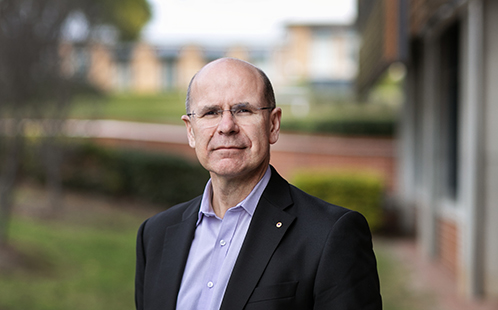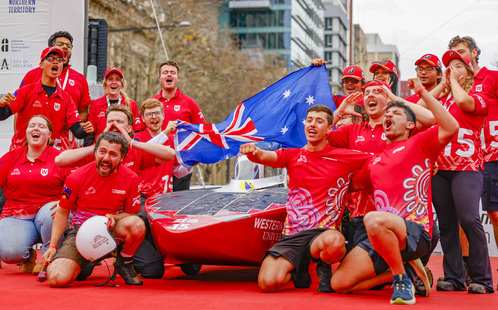Study exposes muscle mania stronghold on Australian young people
A world-first study has revealed that Muscle Dysmorphia (MD) is more common in Australian young people than other obsessive compulsive and eating disorders.
Researchers from Western Sydney University analysed data from the 2017 EveryBODY study – a population-based survey of eating and body image disorders – to investigate and report on the prevalence of MD.
The results, published in Psychological Medicine,(opens in a new window) reveal that – of the 3,618 Australian adolescents surveyed – 1.8% met the criteria for MD.
Dr Deborah Mitchison, from the University’s Translational Health Research Institute (THRI) and School of Medicine, said a prevalence of 1.8% is significant and highly concerning.
“When you consider that this study and others have determined that anorexia nervosa only affects 0.2-0.5% of the population, and bulimia nervosa 0.6% – it’s clear that MD has a stronghold on Australian young people,” said Dr Mitchison.
“What we are talking about here, is a rate of self-reporting of serious, obsessive behaviours, which exceeds that of other disorders.”
Muscle Dysmorphia (MD) is a psychiatric disorder, characterised by excessive preoccupation with having a toned or muscular body, which can lead to severe distress and have significant negative implications on people’s lives.
“MD often manifests in compulsive muscle-building behaviours such as adhering to a very high-protein diet, or in frequent weight lifting,” said Dr Mitchison.
“It becomes an urge that sufferers cannot ignore – in extreme cases leading them to use anabolic steroids, or to pass on social events due to their intense desire to maintain a strict exercise and eating regime.”
MD has only recently been classified as a specifier of Body Dysmorphic Disorder (BDD). The condition does not yet have an accepted model for assessment or treatment, and many cases continue to go undetected and undiagnosed.
Dr Mitchison said there is much that is still not known about MD, and the Western Sydney University study has contributed to an increased understanding about the disorder. The study also found:
- MD is only slightly more common in boys, with 2.2% meeting the criteria compared with 1.4% of girls.
- Boys are more likely to have a higher drive for muscularity and experience distress if their weight-training regime is disrupted, while girls are more likely to be preoccupied with muscle tone and cite discomfort with exposing their bodies.
- MD is slightly more prevalent in older adolescents, indicating that it has a later onset than other eating disorders.
Dr Mitchison said there is a common perception that MD is a reverse form of anorexia, in which sufferers need to be as big as possible. It’s also believed that MD primarily affects males, while anorexia nervosa affects females.
“We know from this study, that younger boys and girls can meet the criteria for MD. They might not fit the mould of being body builders – but they do have a distressing preoccupation with not being lean and muscular enough, which can have a significant impact on their lives,” she said.
“If the research focus is entirely on males or body builders, as has been the case to date, some of the subtler presentations of the illness, especially as they present in females, can go undetected.”
Dr Mitchison said the high prevalence of MD points to an urgent need for further investigation of the condition, and the development of evidence-based public health and clinical intervention programs. More funding is desperately needed to attain these goals.
ENDS
17 March 2021
Latest News

ABC RN transcript: Vice-Chancellor Professor George Williams discusses higher education sector, student support, and the impact of AI
The following is a transcript of an interview that aired on ABC Radio National Saturday Extra between presenter, Nick Bryant and Vice-Chancellor, Distinguished Professor George Williams AO.

Western Sydney University are the number one Australian solar car team at the 2025 Bridgestone World Solar Challenge
Western Sydney Solar Car team has crossed the finish line placing preliminarily sixth in the world overall, and the number one Australian team in the world’s most prestigious solar car challenge.

Western Sydney University Statement on Cyber Incidents
Western Sydney University has issued an update to its community following confirmation that previously stolen personal information was published online, including on the dark web.
Mobile options:

